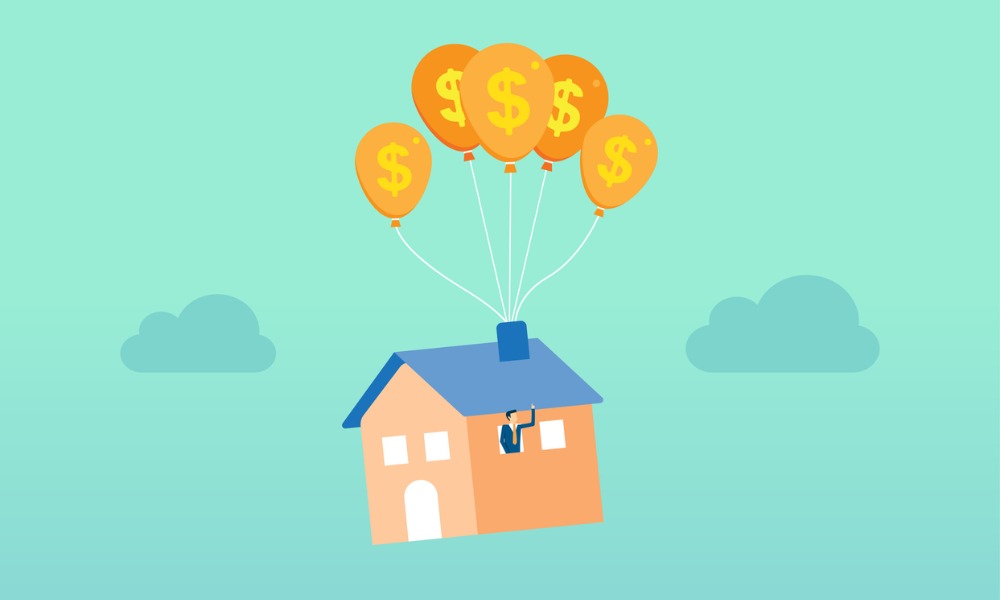Price growth continues to slow

The price of an average house in the UK was £286,000 in April 2023, up from the previous month’s average price of £285,000.
Latest house price data supplied by HM Land Registry, Registers of Scotland, and Land and Property Services Northern Ireland showed a price growth of 3.5% in the 12 months to April, slowing down from 4.1% in March 2023.
UK average house prices increased by 3.5% in the 12 months to April 2023.
— Office for National Statistics (ONS) (@ONS) June 21, 2023
Down from 4.1% in March 2023.
➡️ https://t.co/T7lsNs9tHC pic.twitter.com/hS56hSyYhM
The Office for National Statistics (ONS), in its UK House Price Index report, noted that while April’s average house price was £9,000 higher than what it was 12 months ago, it was still £7,000 below the recent peak in September 2022.
Average house prices increased over the 12 months by 3.7% to £306,000 in England, by 2% to £213,000 in Wales and to £187,000 in Scotland, and by 5% to £172,000 in Northern Ireland.
Among the English regions, the North East saw the highest annual percentage change over the year to April at 5.5%, while London recorded the lowest at 2.4%.
“Annual house price inflation slowed again in April across most UK nations and regions,” commented Aimee North, ONS head of housing market indices. “The North East showed the highest annual growth, while London remains the slowest growing English region.”
Jeremy Leaf, north London estate agent and a former RICS residential chairman, said the market was “entering a bumpy phase.”
“Just as buyers and sellers paused after last September‘s mini budget, they are doing so again,” he noted. “However, in our offices we are not seeing serious price corrections, renegotiation of previously-agreed terms or mass withdrawals. There’s still plenty of cash and equity-rich buyers who want to profit from advantageous mortgage rates and price sensitivity so are negotiating hard.
“Looking forward, we don’t expect much change until inflation and mortgage rates settle, though some price softening is inevitable.”
Nicky Stevenson, managing director at estate agent group Fine & Country, said that while the housing market had been incredibly resilient, mortgage rate pressures were putting a damper on price growth.
“Despite this, the market remains strong, with buyers benefiting from rising stock levels and incentivised by the prospect of negotiating a good deal on their next home,” Stevenson added. “Agreed sales at the end of May reached their highest level of the year so far, up 11% on the five-year average on the same period.
“However, there are some potentially darker clouds on the horizon as mortgage products are being pulled and the banks and borrowers are on tenterhooks awaiting the Bank of England base rate decision this week. People have got more used to the higher interest rate environment, but we could see further downward pressure placed on house prices if 6% fixed rates remain the norm.”
Vikki Jefferies, propositions director at PRIMIS, said the new ONS figures were not surprising, given the strain of higher interest rates and unpredictability on the housing market.
“It is a positive sign that house prices still remain well-above pre-pandemic levels, and the downward trend has been much less pronounced than some had predicted at the beginning of the year,” she pointed out.
“The main challenge for homebuyers now is a volatile mortgage market, which has seen mortgage rates rise to their highest levels since Q4 2022. With more than 400,000 people seeing their existing fixed deals end between July and September, it is crucial that borrowers seek financial advice as soon as possible to ensure they are getting the best deal.”
Any thoughts on this latest ONS release of house price data? Tell us by leaving a comment in the discussion box at the bottom of the page.



